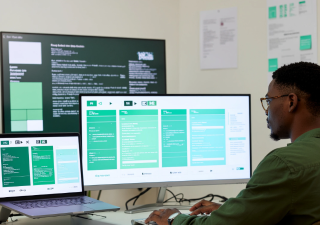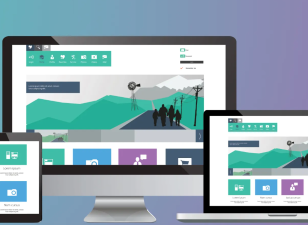Owning a website of your own has become an important way for many people to show themselves, promote their business or share knowledge. For novices, building a website from scratch may seem mysterious and challenging. But don't worry, this article will guide you in detail how to create and operate a website step by step as a novice.
Owning a website of your own has become an important way for many people to show themselves, promote their business or share knowledge. For novices, building a website from scratch may seem mysterious and challenging. But don't worry, this article will guide you in detail how to create and operate a website step by step as a novice.
Clear goals and positioning
Before you get started, the most important thing is to clarify your website goals and positioning. What do you want to achieve through the website? Is it to share personal insights, display works, sell goods, or provide some kind of service? Clear goals will directly affect your subsequent design choices, content planning and marketing strategies. At the same time, consider who your target audience is, their needs, interests and browsing habits will help you better design the website structure and content.

Choose a domain name and host
The domain name is your website address, and it is the "house number" for users to find you on the Internet. It is crucial to choose a domain name that is short, easy to remember and related to the content of your website. You can query and purchase it through major domain name registrars.
The host is the space where your website files are stored, which determines the access speed and stability of the website. Choose a suitable hosting plan based on the size of your website, traffic expectations and budget. For beginners, shared hosting is often a cost-effective option, offering basic website hosting services that are easy to use and low-cost.
Choosing the Right Website Builder
For beginners with no programming experience, using a ready-made website builder is a great way to quickly get started. These tools typically offer a drag-and-drop interface, allowing you to design a beautiful website without writing code. Popular website building platforms like WordPress, Wix, and Squarespace have extensive template libraries, plugin support, and active communities, making it easy to build a fully functional website.
Designing and Building Your Website
Choose a Template: Based on the type and style of your website, choose a suitable template from your chosen website builder's library as a starting point.
Customize Your Design: Use the platform's editing tools to adjust colors, fonts, layout, and other aspects to make your website more tailored to your brand and personal style.
Add Content: Create pages such as Home, About Us, Services/Products, Blog/News, and Contact Us, and populate them with appropriate content. Keep your content concise and clear, using both images and text to ensure users can quickly access the information they need.
SEO Optimization: During the development process, pay attention to optimizing your website's SEO (search engine optimization) by setting keywords, optimizing image descriptions, and using title tags appropriately to improve your website's ranking in search engines.
Integrate Necessary Features
- Contact Form: Add a contact form to make it easy for visitors to contact you.
- Social Media Links: Integrate social media buttons to encourage visitors to share your content or follow your social media accounts.
- Online Payment: If your website sells products, integrating secure online payment systems (such as PayPal and Stripe) is essential.
- Analytics: Install web analytics tools (such as Google Analytics) to track visitor behavior, understand website performance, and provide a basis for subsequent optimization.

Testing and Launching
Before officially launching, be sure to thoroughly test your website, including its display on different devices, link validity, and form submission functionality. Identify and correct any potential issues to ensure stable operation.
Once you have verified that everything is correct, you can publish your website online and let the world see your work.
Ongoing Maintenance and Updates
A website isn't a one-time project; it requires ongoing maintenance and updates. Update content regularly to keep your site fresh and engaging; check and update plugins and themes to ensure website security; monitor website performance and adjust optimization strategies based on analytical results.
Also, actively engage with visitors, respond to comments and feedback, and build a strong user community. Strategies like social media, email marketing, and SEO optimization can help you attract more visitors and enhance your website's influence.
Learning and Growth
As a beginner, maintaining a learning attitude is crucial. Stay up-to-date on the latest trends and techniques in web design, user experience, SEO, and other areas. Take online courses and seminars, join relevant communities, and exchange experiences with other website builders to continuously improve your skills and perspective.
Conclusion
Creating a website requires a certain amount of time and effort, but the sense of accomplishment you feel when you see your work take root online and garner widespread attention and recognition is unparalleled. Remember, every great website starts from scratch. With patience, a willingness to experiment, and continuous iteration, you too can create your own remarkable online world. In the process, you will learn more about technology, design, marketing, and more importantly, you will learn how to turn your ideas into reality and influence and inspire others.
